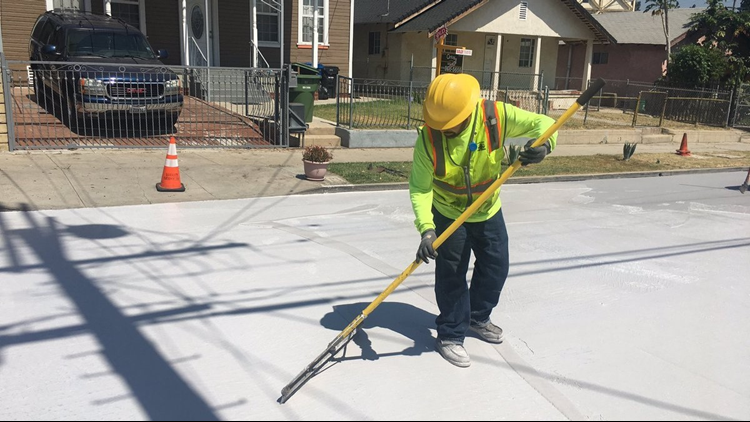It may only be spring but in Sacramento the summer heat comes quick.
Locals know, dry, high heat is just a part of living in the Capitol City. Unfortunately, the high temperatures can not only be uncomfortable for residents, it can also be costly or-- deadly.
Due to it's urban nature, over the summer, Sacramento suffers from the 'Heat Island Effect', which happens when roof and pavement surfaces reach temperatures 50 to 90 degrees Fahrenheit hotter than the air, according to the U.S. Environmental Protection Agency (EPA).
The elevated temperatures in urban neighborhoods can increase the demand for air conditioning and in some cases, even trigger a Flex Alert. Hot pavement takes longer to cool at night and can cause discomfort or danger to sensitive populations such as older adults or children who depend on the heat breaks at night to cool off. Pets also risk burning their paws on hot asphalt when taken outdoors.
Last spring, the Los Angeles Bureau of Street Service became the first California city to coat city streets in CoolSeal, a light gray-colored coating designed to reflect solar rays.
The technology is manufactured by California-based company, GuardTop and can cool the pavement by more than 10 degrees and help reduce the effects of a hot city climate. GuardTop initially worked with the military and used CoolSeal on aircrafts to conceal them from spy satellites using infrared cameras, according to the Washington Post.
The pilot project applied CoolSeal to one neighborhood street in each of the city's 15 council districts, according to KABC.
The catch?
The coating costs about $40,000 per mile and lasts about seven years, according to the Washington Post.
Greg Spotts, assistant director of L.A.'s Bureau of Street Services, told KABC, the Council set aside $150,000 for the pilot program and saw a difference of 11 to 13 degrees in the streets with the coating.
The Los Angeles Mayor Eric Garcetti's plan to reduce the average temperature in the inner city by 3 degrees over the next 20 years, according to the Los Angeles Times.
While Sacramento doesn't have any future plans of following in Los Angeles' footsteps with cooler pavements, the City's general plan includes reducing the 'Heat Island Effect', according to Marycon Razo, spokesperson for the City of Sacramento.
The City's plan already includes reflective roofing features and also relies on the large tree canopy to naturally cool the city streets.
While the immediate effects of cooling pavement are beneficial, the long term effects are not ideal for every city.
A study by Berkeley Lab's Heat Island Group found the reflective coating requires "far greater" energy to maintain than simply changing the pavement material. Over the time span of 50 years, maintaining the coating would require six times as much energy as an asphalt and rock surface.
If the annualized extra cost of making a square meter of cooler pavement is less than a city's electricity savings, then the project would be cost-effective.
The savings and costs would vary from city to city depending on the local climate.



